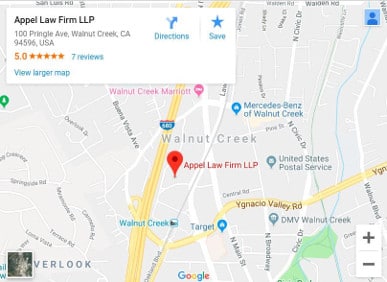Head-on collisions are a particularly dangerous and feared category of car accident. The National Transportation Safety Board (NTSB) reports that that in 2010, nearly 1,100 Americans died due to injuries arising from head-on car crashes. NTSB chairperson Deborah Hersman adds that as much as 20 percent of such accidents are fatal – and most are preventable.
What causes head-on collisions?
Head-on crashes occur when the front-end of two vehicles collide. The vast majority of these accidents occur on rural roads and undivided two-lane roads. While one might think that most head-on collisions occur while a driver is executing a passing maneuver, most actually occur when one driver knowingly or unknowingly strays into another’s lane. This may happen when the motorist:
- falls asleep at the wheel
- drives under the influence of drugs or alcohol
- Accidents Caused by Distracted Driving (e.g., texting, eating, talking on the phone)
- falls to negotiate a curve properly
- drives too fast
Head-on collisions may also occur when a driver runs a red light or stop sign, fails to yield the right of way during a turn, or loses control of a vehicle due to equipment malfunction.
The NTSB reports that the danger is greatest for those in passenger cars: when a passenger car and light truck collide head-on, a fatality is 3.5 more likely for those in the passenger car than the light truck. Other common injuries in head-on crashes include broken bones, spinal cord injuries, head trauma, paralysis, lacerations, burns, and coma.
How can I avoid head-on collisions?
The best way to avoid head-on car accidents is to remain alert when driving, particularly when on rural roads or roads without a dividing line. Both Vasco Road and Marsh Creek Road are notorious local examples of dangerous rural roadways where drivers should be very cautious. Also, make sure to read the road ahead of you, looking out for other drivers that might not be as careful as you. In addition:
- Turn your headlights on to alert other drivers to your presence
- Drive within the speed limit, appropriate to the road and weather conditions
- Reduce your speed if you notice an oncoming car straying into your lane
- Drive to the right: don’t hug the centerline. If someone strays into your lane, it’ll be easier to get out of the way
- Prepare to drive off road: it’s preferable to drive off road or into a ditch, shrub or other object rather than colliding with another car head-on. If you can, try to hit a solid object with a glancing blow off the side of your car.
What should I do when I have been involved in a head-on collision in San Francisco, California?
After seeking medical attention for your injuries and reporting the accident to the police, talk to a Bay Area Car Accident lawyer. A lawyer experienced in head-on collisions can work with accident reconstruction experts to determine exactly who was at-fault and responsible for your injuries. In addition, a skilled lawyer can track down and interview witness, have experts assess damage to your vehicle, and collect all medical evidence to prove the extent of your injuries.
If your claim is successful, you may be entitled to financial compensation for your medical expenses, earnings losses, and pain and suffering.
The California head-on collision accident attorneys at the Appel Law Firm LLP are dedicated to helping San Francisco Bay Area residents receive compensation for injuries and wrongful deaths arising from head-on motor vehicle crashes. Contact us today for a free consultation.
